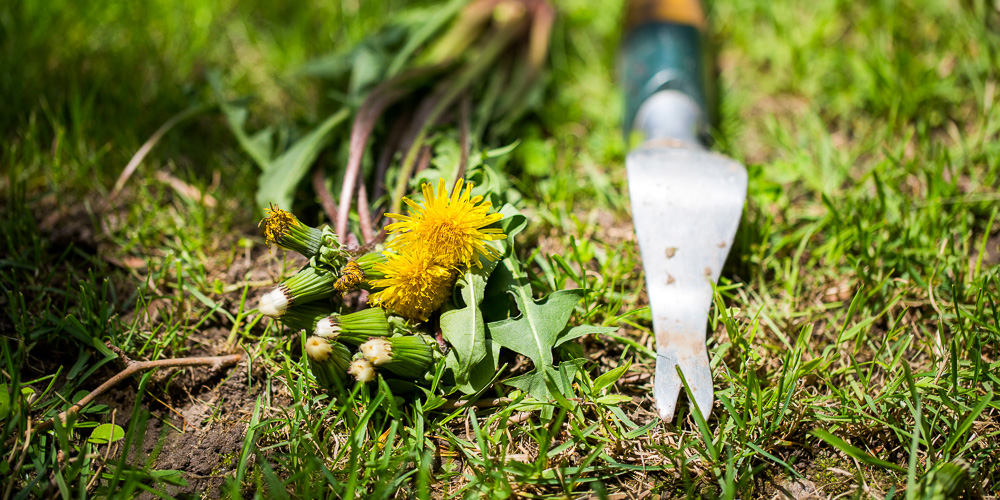Weeds aren’t inherently evil plants. With a few arguable exceptions, they’re just plants growing where we don’t want them. Or as poet Ralph Waldo Emerson famously put it, a weed is a “plant whose virtues have not yet been discovered.”
One plant widely regarded as a weed that does have known virtues is the dandelion, that ubiquitous dark-green perennial with the bright-gold, daisy-like spring flowers and then fluffy seed balls. The dandelion is so common and widespread that it’s arguably America’s best-known weed. Yet it has a long history as a medicinal and edible plant in addition to its ability to draw nutrients from deeper in the soil and cheer at least some people with its sunny May disposition.
That raises the question, “Is the dandelion a weed or a useful plant?”
The pro-dandelion camp

Nikolay_Donetsk / iStock / via Getty Images
Native to Europe, dandelions have made their way around the world because of their prolific seeding and ability to grow in even the worst of soils.
Arab, Chinese, and native-American medicine have used various parts of the plant for centuries, ranging from treating skin ailments to boosting the immune system to treating cancer.
Herbalists still use it today for a variety of ills, and mainstream medicine has produced studies showing such potential benefits as reducing inflammation, lowering cholesterol, and aiding digestion.
Beyond that, some tout the dandelion as a tasty and nutritious salad green, somewhat akin to spinach. Dandelion plants rival spinach for iron content and surpass it for vitamin A. Dandelions are also rich in vitamin C, vitamin D, antioxidants, manganese, potassium, and calcium.
Tender young leaves are what’s usually eaten in salads and are what sometimes show up bagged in food stores.
For those who would rather eat dandelions than kill them in the landscape, it’s important to harvest only from areas not treated with pesticides and herbicides and to wash the leaves thoroughly to head off potential soil and animal-waste contaminants.
Enviro-friendly gardeners point to the dandelion as a good nectar source for pollinating bees, while others say the bright flowers alone are redeeming enough to qualify the plant as a non-weed.
And some just like the lore that goes with dandelions, such as picking petals to determine whether “she loves me, or she loves me not” or blowing the fluffy seed heads to send wishes.
The anti-dandelion camp

wuviveka / iStock / via Getty Images
The dandelion’s prolific seeding is the main reason why it’s become such a common weed around the world. Botanists say a single dandelion flower can produce up to 200 seeds a year. Pair that with each seed strand’s floating ability, and it’s easy to see how dandelions can quickly multiply and expand.
Once a dandelion germinates, it produces a deep, sturdy taproot that allows it to penetrate the most compacted of soils and to survive droughts that kill less virile growers. This is a plant that can even grow in sidewalk cracks.
Dandelions are good at surviving winter cold, too, allowing the roots to expand and produce more and new top growth year after year.
Dandelions aren’t the easiest weeds to kill either. If you don’t remove the entire root system when pulling them, new shoots will sprout from the left-behind pieces. Even herbicides don’t always kill them on the first try. Because of this easy-to-spread and hard-to-kill habit, dandelions have made enemies with many gardeners, farmers, and golf-course superintendents
In garden beds, new dandelions can be short-circuited by weed preventers. These granular products don’t kill existing dandelions, but they do stop new dandelions from growing when they’re applied before the seeds sprout.
Preen Extended Control Weed Preventer, for example, prevents dandelions in garden beds all season long with only two annual applications.
For the lawn, GreenView Fairway Formula Spring Fertilizer Weed and Feed and Crabgrass Preventer is a triple treatment product that fertilizes, prevents new grassy weeds, and kills broadleaf weeds, including dandelions. This product is most effective on dandelions when applied to damp grass blades and then not walked on for at least a day and not mowed for at least two or three days afterward.